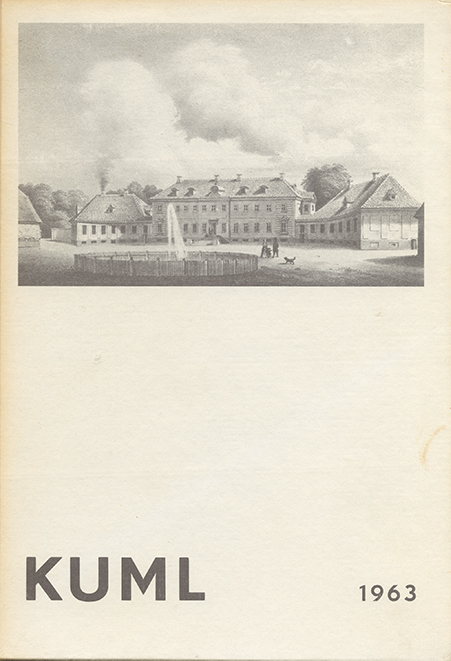Det ældste Århus
DOI:
https://doi.org/10.7146/kuml.v13i13.104002Keywords:
Aarhus, earliest, ældste, Aros, viking age, vikingetidAbstract
Oldest Aarhus
Sealed down below the streets and houses of Aarhus lie the remains of the earliest city, and our most important task must be to seize every opportunity to investigate these early levels.
Historical sources concerning Aarhus in the early Middle Ages and earlier are taciturn. Some mention that the archbishop of Bremen in 948 had a bishop, Reginbrand, with Aarhus as his see. Adam of Bremen says that -according to rumour- the see was given up in 988, but by about 1065 a bishop is once more named. It is worthy of note that C. G. Schultz dates the crypt beneath the Church of Our Lady to that date. But most important is it that the bishop was presumably sent forth to a city; for cities were the natural administrative centres for the Church. Indirectly then we can assume that at least by the year 900 Aarhus was a fairly populous place.
That royalty took an interest in Aarhus is shown by the coinage issued in Aros, under Hardicanute (1035-42) and Magnus the Good (1042-47), and by the fact that later, in the 13th Century, Aarhus is recorded as a royal fief, which may reflect the connection known to exist between the crown and the two other Scandinavian cities of Viking date, Birka and Hedeby.
The importance of Aarhus in the Viking period is also reflected by a concentration of runic stones greater in number and artistic quality than anywhere else in South Scandinavia.
But excavation is the final source of historical information, and the only one that can increase the sum total of available evidence. And accidental discovery, in house foundations, of weaving weights and potsherds, and in particular of the drinking-horn ornaments from below Aarhus theatre, have given hints of what might be found.
City archeology is a neglected field in Denmark. Admittedly Denmark has not had the opportunities of the bombed areas left by the last war in Poland and Germany and England, which were used to such good effect by investigators there. But it is usual in Europe and beyond that the law insists on professional investigation of the deeper layers in ancient cities, before they are disturbed by modem building. In Poland and in Russia and in Germany, even in Sweden and at Bergen in Norway, ancient city centres have been investigated, with imposing results. Whereas Denmark, despite its comprehensive laws on scheduling of ancient remains, is often powerless in the face of the building constructor.
It is therefore particularly fortunate that the Forhistorisk Museum, thanks to the patient goodwill of the owners of the site of "Hotel Scandinavia" and to generous grants from the City council of Aarhus, has been able to carry out an investigation of an importamt site within the ancient city centre of Aarhus.
The site of the Viking city of Aarhus has been widely discussed. Hugo Matthiesen suggested the area of the Church of Our Lady, while others, including Helge Søgaard, emphasized the probability of the cathedral area. Previous excavations gave no certainty, though the most interesting is the section investigated by Ejler Haugsted in 1915-16. Here a portion of a fortification rampart was found under Marcus Bech's yard just east of Badstuestræde. Haugsted records a row of massive posts of oak, about 25 cms. thick and about 50 cms. apart, running N-S towards some remains of buildings which suggest a city gate. While Haugsted dated these remains to the Middle Ages the date is uncertain, and it would be of importance to carry out renewed excavations, with improved techniques, in this interesting area. In the meantime, the excavations under "Skandinavien", though not fully completed, are of such importance for our understanding of Viking Aarhus that they deserve preliminary publication.
Ole Klindt-]ensenDownloads
Published
How to Cite
Issue
Section
License
Fra og med årgang 2022 er artikler udgivet i Kuml med en licens fra Creative Commons (CC BY-NC-SA 4.0).
Alle tidligere årgange af tidsskriftet er ikke udgivet med en licens fra Creative Commons.


